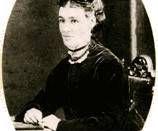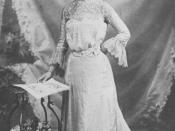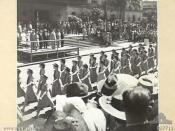The life for women has changed greatly in the 20th century. The key stepping stone which allowed these changes to occur was the passing of the Franchise Bill in 1902 which granted suffrage to white women over the ages of 21 in Federal elections. The passing the Franchise Bill was due to the contribution of women such as Vida Goldstein who had published magazines such as Woman's Sphere and Women's Voter, Maybanke Wolstoneholme and Rose Scott who led the Womanhood Suffrage League and Louisa Lawson- founder of the Dawn Club. These women aroused the awareness of women's rights to suffrage, through petitions and protests.
During the early part of the 20th century, the social image promoted of women was that their place was in the home. In World War 1, women wanted to participate actively in war effort but were refused by the government. Thus, they took part in voluntary work such as the Australian Red Cross British Society , Australian Comforts Fund and army nursing services.
Some women had also joined the reserve labour and received half the wages of men.
The 1920s marked a decade of progress, more women were involved in the paid work force, and they expressed rebellion through the fashion trend- flappers which sported shorter skirts. The first female politician, Edith Cowan, was voted into Parliament, in 1921. She introduced the Women's Legal Status Bill in 1924 which lifted the ban of women entering male dominated fields.
In World War 2, due to the encouragement of the government, women were more actively and directly involved in the war effort. They involved themselves in organizations such as the Land Army, Australian Women's Army Service, Women's Royal Naval Service and Army Nursing services. Many women had replaced men in the work force and carried out traditional...


